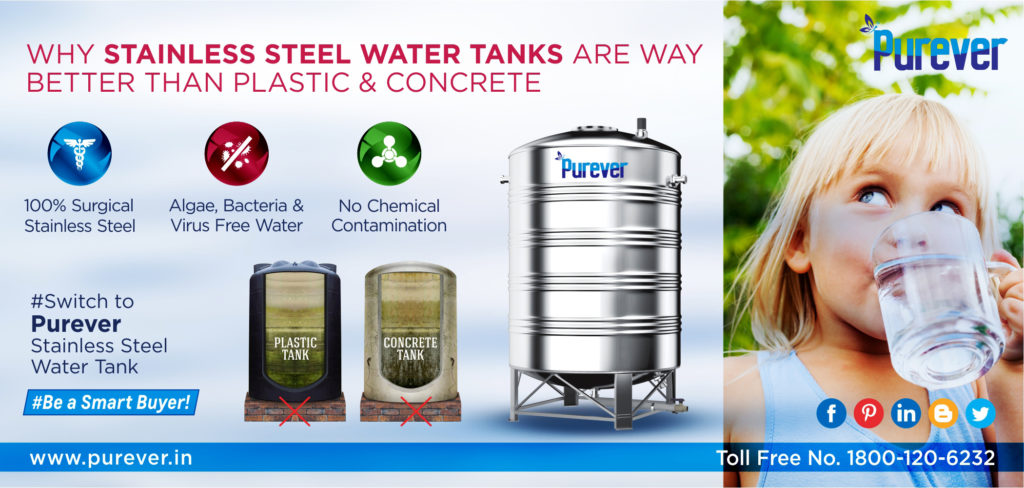Why Stainless-Steel Water Tanks are way better than Plastic & Concrete

When making a decision on the purchase of a storage tank for your property, there are many things to consider. For most business owners, important considerations are cost, size, and location. Although these are important, still they aren’t the first. Before deciding upon the cost, or size of the tank, it is important to consider the material of construction.
Water tanks are available in various materials like concrete, steel, and polyethylene, with each having their own benefits. However, stainless steel tanks are considered to be the best choice overall. Why? Read the post to get answers.
1. Corrosion Protection: Stainless steel offers tremendous durability in comparison to steel, concrete or plastic. This material resists oxidation by water, as well as biocides, which is a beneficial feature for a business working with water, or other corrosive materials. Also, an internal or external coating is not required for stainless steel water tanks.
2. Durability and Longevity: Stainless steel tanks offer high resistance to cavitation, crevice corrosion, as well as wear and tear in contaminated and pure waters. This material remains ductile through a wide range of temperatures and pressures. It is heat resistant, and remains unaffected by exposure to harmful radiations. Also, there is no risk involved with stainless steel water tanks, such as freezing, rust, or cracking.
3. Recyclable: Stainless steel is considered as a safe metal alloy, which means it is environment friendly. Since last many years, there has been major advancements in the production of the stainless steel. These advancements focus on use of natural energy and resources.
4. Hygienic: The concrete storage tanks offer cost benefits, thus are the most preferred. However, many users are unaware about its unhygienic side. Concrete tanks are susceptible to bacterial and mold growth, and chemical leakage. Being porous, these tanks leach calcium, which contaminates the water supply. However, stainless steel is a hygienic material. It has a high passive film stability, which contributes to its inertness in water. As a result, it offers hygienic drinking water than a concrete water tank.
5. Mobility: It is seen that most concrete water tanks are poured in place, and remain fixed in the spot. However, this may not suit everyone. If a company changes its location, it’s impossible to move a concrete plant. Stainless steel tanks can be easily moved using a forklift, or by other means. This helps eliminate a cost of buying a new tank, as well as stress and efforts associated with it.
6. Aesthetic Value: Water tanks made from concrete, plastic, or other cheaper materials aren’t that nice to look. They look sullied with mold, after a few years in operation. Stainless steel tanks look streamlined, and can be easily painted to match any surroundings.
7. Cost: Stainless steel water tanks have a longer lifecycle than many cheaper tanks, and require less repairs, installations, or maintenance. This helps reduce the Total Cost of Ownership (TCO).
For more information Visit Our Website:
https://www.purever.in
Toll-Free: +1800-120-6232
Mob: 9877777892, 9877777893




